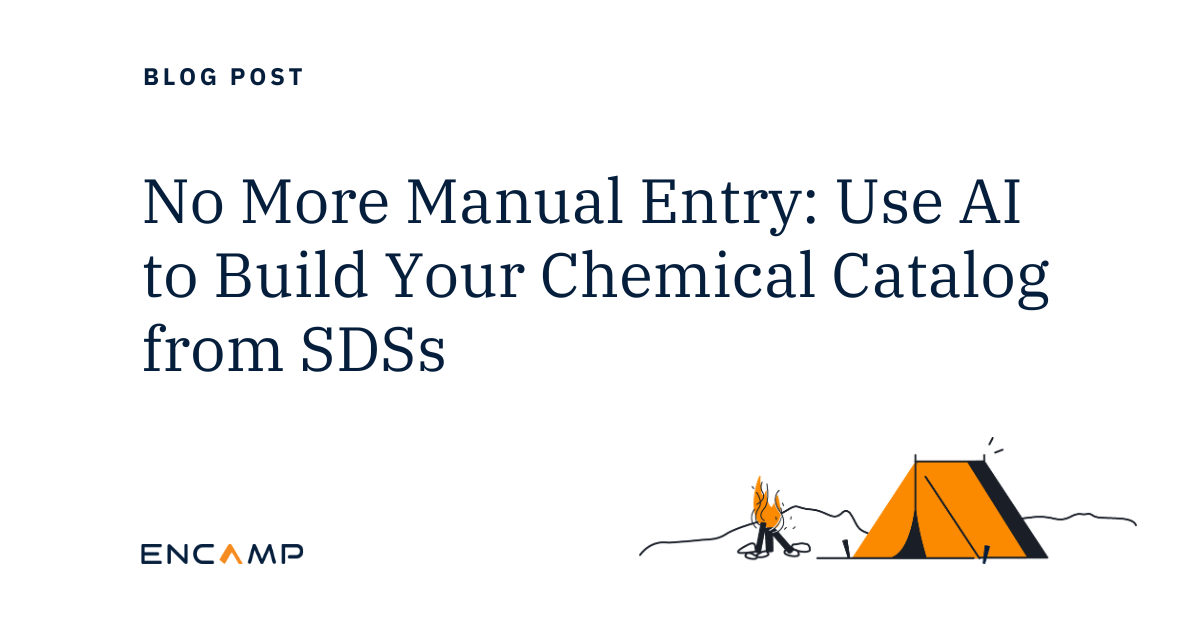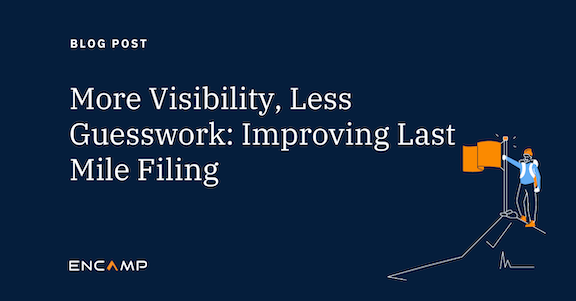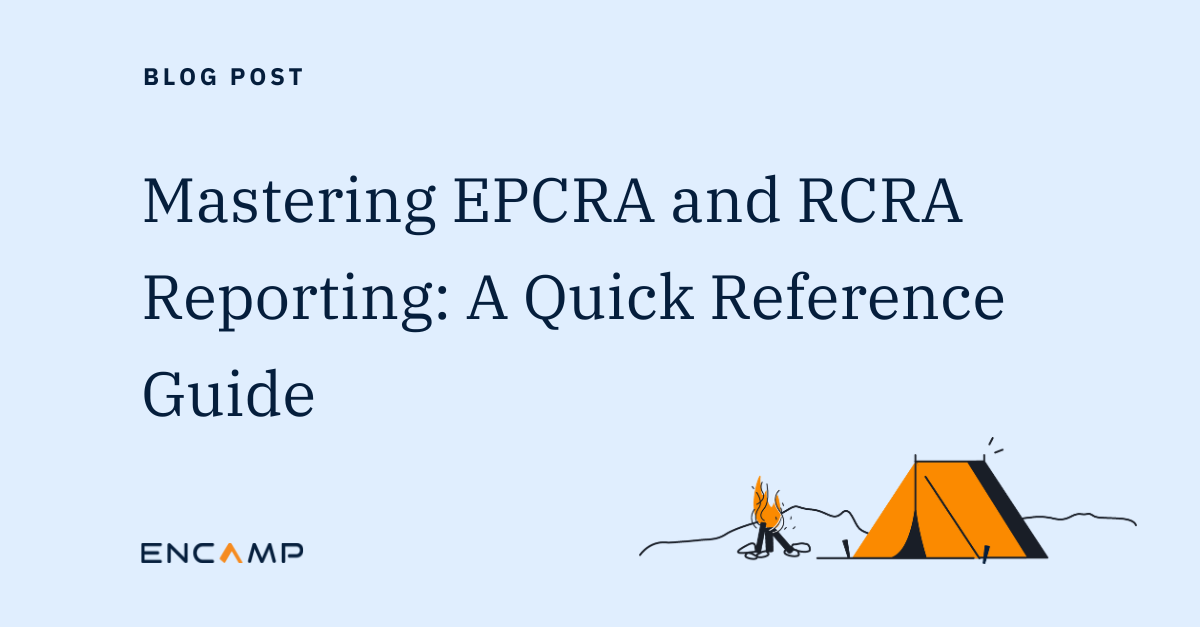In environmental compliance circles, March 1 is the due date every year for EPCRA Tier II reporting. While most of us in this profession have felt the stress of submitting Tier II reports at the 11th hour, it doesn’t have to be this way thanks to technology.
Unfortunately we can’t change the date Tier II reports are due for EPCRA. But we can suggest a start date to begin collecting information, reviewing it, and preparing your reports for submission. That date is today, or tomorrow, or ASAP. The sooner the better. Because preparing for Tier II reporting has become a year-round mission.
The date to start is today, or tomorrow, or ASAP.
The sooner the better.
Activities to complete upfront
To make your Tier II submissions easier next March, here are some activities you can complete now. We’ve also listed some other helpful resources, particularly from EPA, to guide you along the journey. And as always, our Customer Success team is ready to help — all year round.
- Start with a checklist, such as this one. A checklist is a good foundation for planning and completing reporting tasks.
TIP: Our Tier II Guide (eBook) is an equally good resource for Tier II guidelines and do’s and don’ts.
- Verify your state’s Tier II reporting requirements. Check criteria like thresholds, the contacts on your Local Emergency Planning Committees (LEPCs), and even your state’s reporting portal and submission instructions.
TIP: EPA’s reporting requirements web page (linked above) is a helpful starting point. By each state, the agency tracks reporting requirements down to the county and local level.
- Determine which facilities must submit a Tier II report. Of note, confirm any new chemicals that need to be added to your inventory from the previous year. If there are new ones, your state might require you to submit a Safety Data Sheet (SDS) along with the EPCRA Tier II report.
TIP 1: Compile a list of the chemicals at each facility to determine which ones are considered an Extremely Hazardous Substance (EHS). Refer to SDSs and EPA’s list of EHS.
TIP 2: For inventory, consider a calculated approach that takes various positive and negative material transactions into account. This is a best management practice for facilities with high material turnover and transfers. (Note that this practice can be labor intensive since it requires detailed and frequent inventory data updates from Operations.)
TIP 3: Determine the maximum amount of each chemical you have on site at any one time. Compare the amount to threshold planning quantities (TPQs) to see if you need to file an EPCRA Tier II report. You might have to get purchasing and usage records from your procurement or ERP systems (see Item 6 for more detail).
TIP 4: For each facility, remove chemicals that are no longer in use or that were not onsite in quantities that triggered a reporting threshold from the facility’s Tier II report.
- For each reporting facility, compare the current reporting data against last year’s report to see if there are any glaring errors, differences, or omissions. If there are issues, regroup with the proper stakeholders to confirm and make necessary changes.
TIP: Developing a robust review process will reduce the risks that data is omitted or that incorrect information is reported.
- If your state requires files to be in EPA’s Tier2 Submit format, make sure you have the newest version of the Tier2 Submit software.
TIP: For each reporting year, the newest version of Tier2 Submit is generally released in February. See the Tier2 Submit web page for version changes and download instructions.
- Start gathering purchasing records and other inventory information to compile Tier II reporting data.
TIP: Purchasing data is a valuable resource for materials not tracked by usage. Typically, such data is readily available from a purchasing/accounting department. (Giving them an early heads-up doesn’t hurt, however.) A downside of using purchasing data is that it doesn’t consider carryover from previous years’ reporting. There’s also a risk of over-reporting for bulk stored materials.
- If your state requires a facility site plan, be sure the plan for each facility in your organization is up to date. Any changes in a facility’s chemical storage location(s) or other requirements can trigger needed updates to a plan.
TIP: Print out the site plan map for each facility and clearly indicate the locations of all chemicals. This tells first responders precisely where each chemical material is stored and at which location, since companies sometimes have different facility locations within the same county.
- Verify your contact person at each facility. Make sure the person’s name (plus email address and phone number) is written in full and spelled correctly. This is the same for any emergency contact.
TIP: First responders need specific information quickly. Therefore it’s critical that the employee who signed the Tier II report be knowledgeable about the reporting form’s content and its accuracy.
Helpful EPCRA Tier II reporting resources
From EPA
Tier II Forms and Instructions
State Tier II Reporting Requirements and Procedures
Resources and Guidance Documents for Compliance Assistance
EPCRA Quick Reference Fact Sheet
EPCRA FAQs
From Encamp
The Details of EPCRA Tier II Reporting, Spelled Out
Tier II Insight: Hazardous Chemical Inventories
Common Problems While Filing for Tier II
With the end-to-end Encamp platform, our customers make Tier II reporting and environmental compliance faster, easier, and more accurate. They even submit their final Tier II reports to all required agencies via Encamp. But mostly, their business gets a single pane of glass to manage each facet of Tier II reporting and manage EPCRA compliance year round — and say farewell to annual fire drills for 312 reporting or missed 302 notifications.
Transforming the way enterprises stay in compliance
Encamp is on a mission to create a world where good for business can equal good for the environment. We help enterprises transform compliance programs and human processes into a technology-driven system that lays the foundation for accurate and ongoing environmental compliance through a blended method of intelligent high-tech solutions and high-touch expert support.
Megan Walters
Megan is Encamp’s VP of Compliance & Customer Success and formerly a Senior Environmental Scientist. But she’s also a Certified Environmental and Safety Compliance Officer® (CESCO), an EHSMS Internal Auditor, a Certified Hazardous Materials Manager, eRailSafe certified, a HAZWOPER 40 Hour - Emergency Response Technician, and skilled in RCRA, DOT, and ISO 14001. Obviously, she knows “compliance.”



